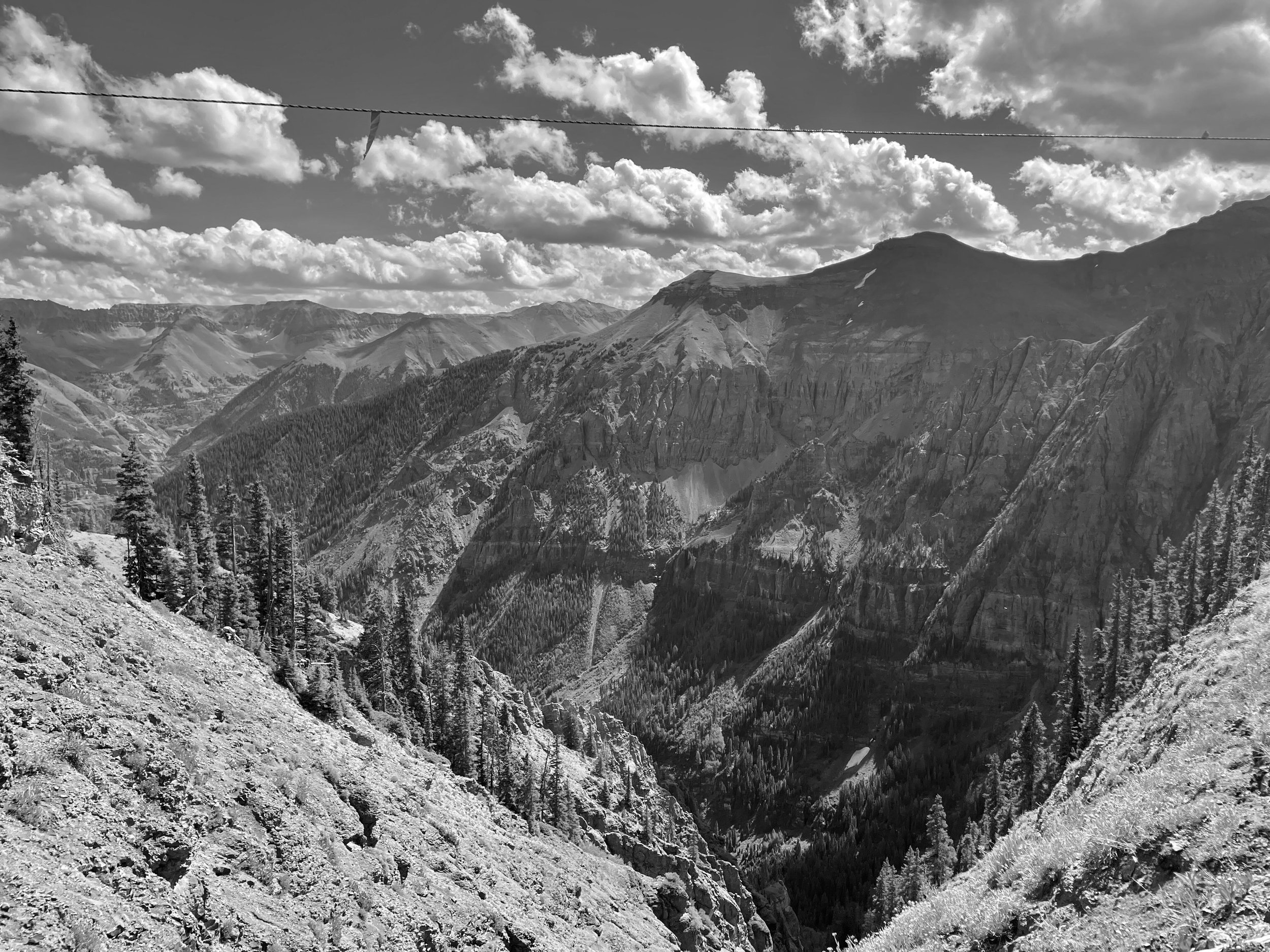50 Steps
Last weekend, Denise and I officiated the wedding of two dear friends. We should have trained for it.
Not that we had a lot of time to prep. Bryce and Meaghan had been engaged for several months, but decided in July to get married in August in Telluride, CO, with a small group of family and friends. It was the most laid back wedding I can remember doing, with plenty of free time and laughter before and after the ceremony itself. It fit the couple—and the officiants, to the extent that it matters—perfectly.
The upshot of having such a low maintenance wedding party was that we had plenty of free time to explore. So on Saturday morning, Denise and I set out to hike a 9-mile loop that began on a trail with the promising name “See Forever.” The app I was using listed it as “a moderately challenging hike,” although a local we spoke to warned us that it could get a little steep early on.
Turns out that “moderately challenging” and “a little steep” were code for “lowlanders might die.” The terrain wasn’t difficult—or at least it wouldn’t have been at the altitudes at which we live. Beginning at 10,500’ was a different story. By the time we made it over the mountain and connected with the Wasatch Trail, we had climbed an additional 1768’. For those of you need help with the math, that’s over 12,000’ above sea level. The air is much thinner, the oxygen concentration much lower. If you aren’t acclimated, you’re going to struggle.
And struggle we did.
Early on, we made the mistake of letting our excitement dictate our pace. We hiked the first half mile just like we would have a trail in the Black Hills. By the time we reached our first stopping point, however, we were sucking wind and fighting leg cramps. Five minutes later, we were off again with the same results, albeit over a shorter distance. Then a third time—this one only a few hundred yards before we took a break.
It was humbling, but far from surprising. Our bodies weren’t ready for those altitudes. The higher we went, the less equipped our muscles and lungs were. If we were going to make it to the top, we would have to enter into a negotiation with our physiologies and our environment.
As we neared the peak, we settled on a tactic I’d read about from high altitude climbers. Take a set number of steps and rest, even if you think you can go further. So we took 50 steps, stopped for a shorter break, and then decided on the next number of steps based on the terrain. Before long, we had hit our stride again. We made the last half of the climb in less time and with less pain than we’d endured in the first half, eventually reaching the trail’s highest point at about 12,400’.
I wrote last week about rest as a necessary discipline. Only a few days later, I feel like I relearned that lesson in a different way. That hike was some of the most strenuous physical work I’ve done in several months, and I never would have made it if I’d let my ego stay in the driver’s seat. Pushing through to exhaustion each time made the mountain an obstacle to be conquered rather than a feature of a marvelous planet, meant to be observed with awe. It would have continued to sap my ability to enjoy what I was seeing or who I was with. Even if I’d made it to the top, I’m not sure it would have been worth it.
My ego might have pushed me to the summit, but at the cost of why I was climbing to begin with.
Turns out the trail was true to its name. Walking along the spine of the mountain offered a view in all directions of the most majestic terrain I’ve ever seen. You felt like you really could see, if not forever across space and time, then as close as a human could reasonably expect to get. The descent took us back and forth across a basin filled with wildflowers and mountain streams. We took a lot of pictures. None of them do it justice.
When I close my eyes, I don’t remember the 50 steps. I remember the pauses, the moments of wonder. I can feel Denise’s hand in mine. I can remember how it felt to be alive in that place, and so aware of the living.

